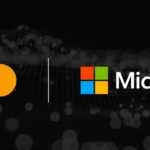“Pi Network is on its way to becoming a global currency.” That idea, voiced by @pibrens, reflects the growing belief among both pioneers and analysts. As Pi integrates Stellar’s Protocol 23, it is positioning Picoin not just as a token but as a cornerstone for the future of tokenomics.
With its expanding infrastructure, Pi Network is being designed to support everything from decentralized apps and NFTs to banking systems and even government platforms.
Protocol 23: Driving Ecosystem Growth
On September 3, 2025, Pi began migrating to Stellar Protocol 23, an upgrade that delivers:
- Soroban smart contract support
- Parallel processing for scalability
- Decentralized KYC aligned with ERC-3643
- Biometric login with Passkey
- Linux Node expansion for enterprise-grade infrastructure
These features enable seamless integration with dApps, DeFi, NFTs, and GameFi. According to Coinpedia, the upgrade also strengthens node coordination and adaptability, setting the stage for broader adoption.
Picoin: From Token to Currency
With more than 15 million verified Mainnet users, Picoin is evolving into a functional currency for:
- Peer-to-peer transfers
- Merchant payments
- dApp access
- Staking and governance
New tools like Pi App Studio, Pi Marketplace, and .pi domains expand opportunities for users to build and monetize their contributions. As smart contracts roll out, Picoin will fuel DeFi, NFT markets, and decentralized governance systems.
Ecosystem Connections: From dApps to Institutions
By building on Stellar, Pi taps into a proven, scalable infrastructure. This allows integration with:
- DeFi and liquidity pools
- NFT platforms
- Tokenized gaming economies
- Banks and payment providers
- Government services and ID verification
The September upgrades are designed to bridge decentralized innovation with traditional finance—laying the groundwork for institutional adoption.
Institutional Momentum and Global Reach
Infrastructure progress has already drawn institutional attention. Sweden’s Valour Pi ETP secured nearly $947M in assets, showing confidence in Pi’s long-term potential. Partnerships with Onramp Money, Banxa, and TransFi expanded fiat access in over 60 countries, while Pi’s listing on Swapfone (BTCC) in the U.S. increased accessibility by enabling direct purchases in local currency.
Tokenomics in Motion
Pi’s tokenomics are evolving toward utility and interoperability. With 161 million PI scheduled for unlock in September, the challenge is balancing supply with adoption. Analysts suggest a rebound toward $0.42–$0.45 if demand holds, though risks near $0.30 remain. By embedding identity verification and programmable smart contracts, Pi is shaping tokenomics around real-world use.
Developer Activity and Ecosystem Expansion
Developer engagement is rising with stronger APIs, testnet environments, and no-code tools like Pi App Studio. The PiOS codebase now 90% complete signals a shift to open-source. Hackathons and funding programs are spurring innovation in identity, peer-to-peer marketplaces, and AI-powered applications.
Challenges Still Ahead
Despite momentum, Pi faces hurdles in volatility, governance centralization, and scaling. With over 82% of supply under Core Team control, the balance between decentralization and oversight is still being worked out.
Next Steps
The roadmap points to:
- Full Soroban smart contract integration
- Broader staking and DAO governance
- Pi-powered marketplaces and ID services
- Wider deployment of smart contract apps
- Possible listings on top exchanges
Conclusion: Toward a Global Financial Layer
Pi has grown beyond its roots in mobile mining to become an emerging financial infrastructure. By linking with Stellar and expanding across DeFi, NFTs, GameFi, and institutional services, Pi is actively shaping the future of tokenomics. For pioneers, developers, and institutions alike, the message is clear: Pi is positioning itself at the heart of tomorrow’s global economy.




















iidju7